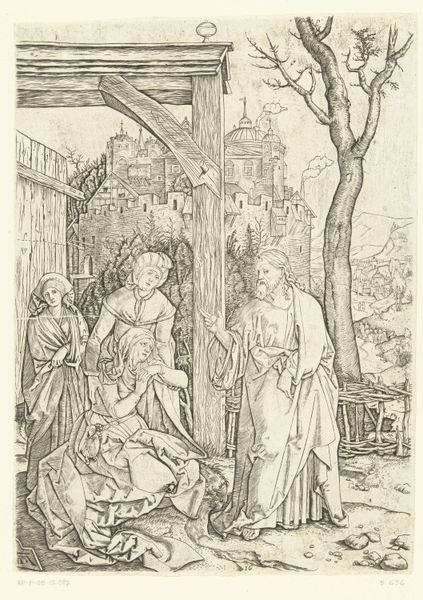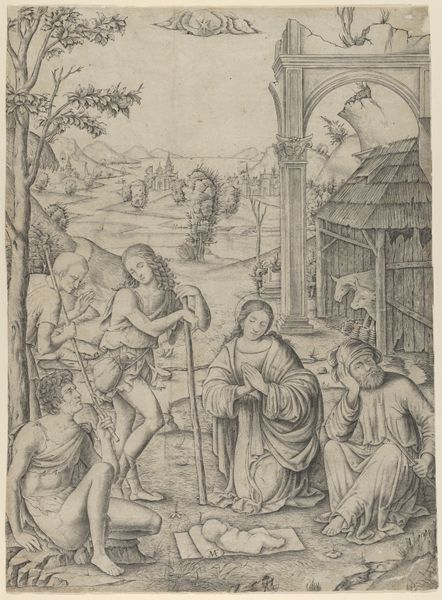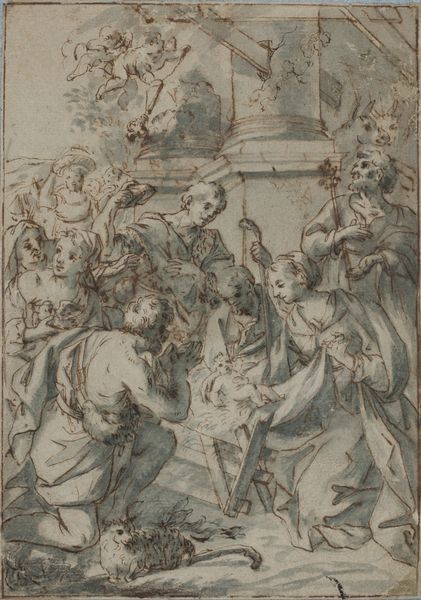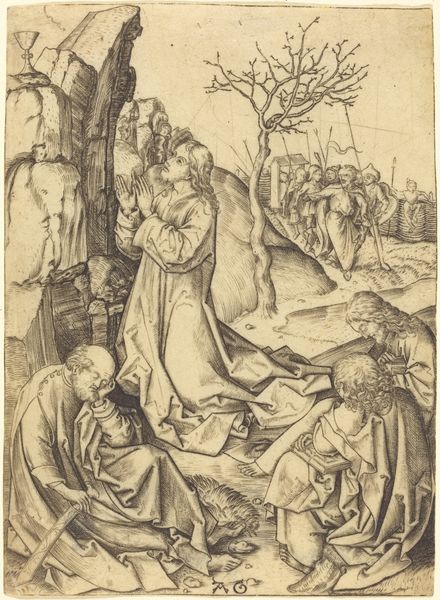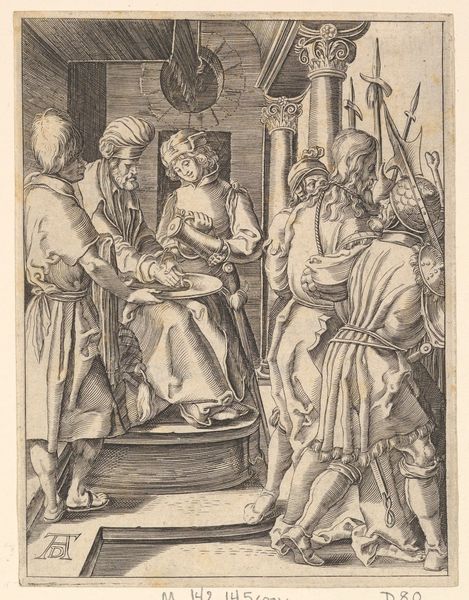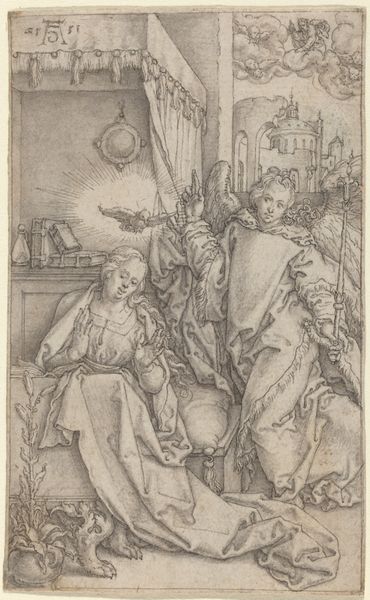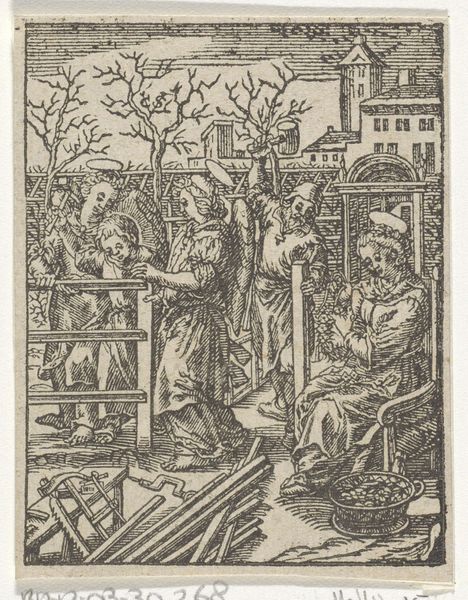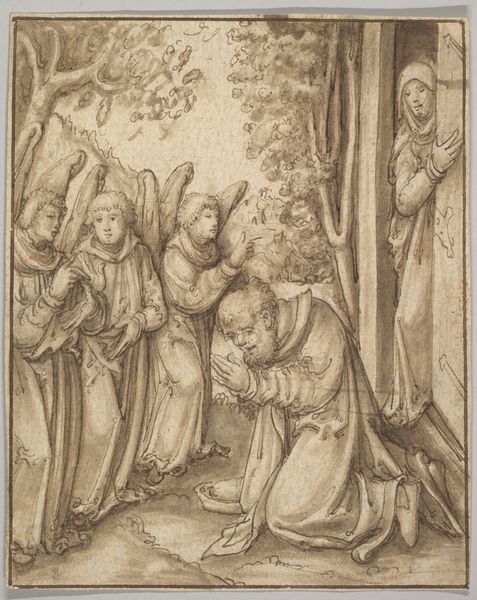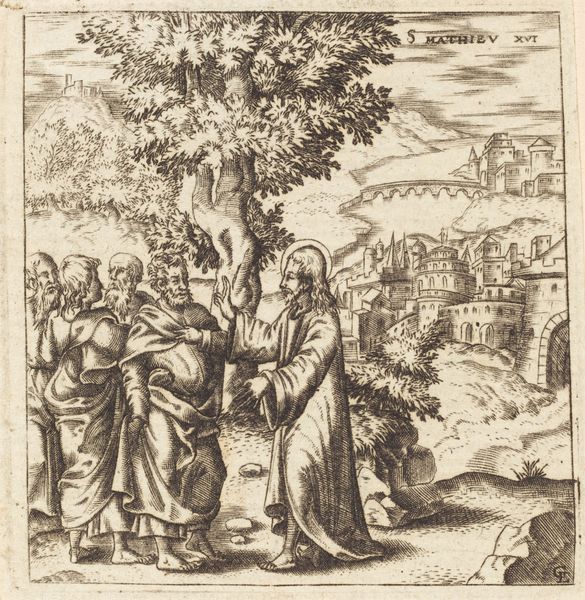
print, etching, engraving
#
garden
# print
#
etching
#
landscape
#
figuration
#
history-painting
#
engraving
Dimensions: height 81 mm, width 62 mm
Copyright: Rijks Museum: Open Domain
Curator: Before us is "Fotoreproductie van de gravure Le lattis du jardin," a print by Edmond Fierlants dating back to before 1860, showcasing engraving and etching techniques. Editor: It has such an ethereal, dreamlike quality to it. The stark contrast and precise lines evoke a sense of detailed observation, but there's also something otherworldly about the scene. Curator: Precisely. What's interesting to consider is Fierlants' positioning within the historical context. This was a period marked by significant social change and evolving understandings of labor. Looking closely, we see the labor depicted here is collaborative, and gendered with angels and what appears to be an image of domesticity alongside craft and creation. Editor: I am fascinated by the compositional choices here. The arrangement of figures leads the eye through the scene in layers. Note the attention to texture, from the foliage to the folds of the garments—the use of light and shadow gives depth and form. Curator: Let's consider what it meant to depict figures as seemingly divine amidst scenes of construction and craft. Does it speak to a sacralization of labor, a commentary on the societal role of family and craft, or a way of grounding divinity in the everyday? These choices reflect ongoing debates about representation, value, and the idealization of life in art during this time. Editor: It also suggests the artist's awareness of the historical and philosophical implications embedded in the chosen themes. It's as if Fierlants invites us to delve into a deeper reading of each visual element. The architecture is particularly interesting in terms of the artist's representation of idealized structure, especially in the presence of spiritual themes and more common representations of human construction. Curator: I agree. It makes me think about the positionality of domesticity and its depiction, while there's almost an idealized view of childhood rendered by his angelic figure and cherub face. This brings the image in direct conversation with larger notions of gender and history painting during this era. Editor: Studying the print, I notice an intersection of material skill and intellectual depth that provides such fertile ground for contemplating its intricate details and complex composition. Curator: Indeed. Viewing Fierlants’s piece today urges us to examine our understandings of history, society, family and identity construction.
Comments
No comments
Be the first to comment and join the conversation on the ultimate creative platform.
